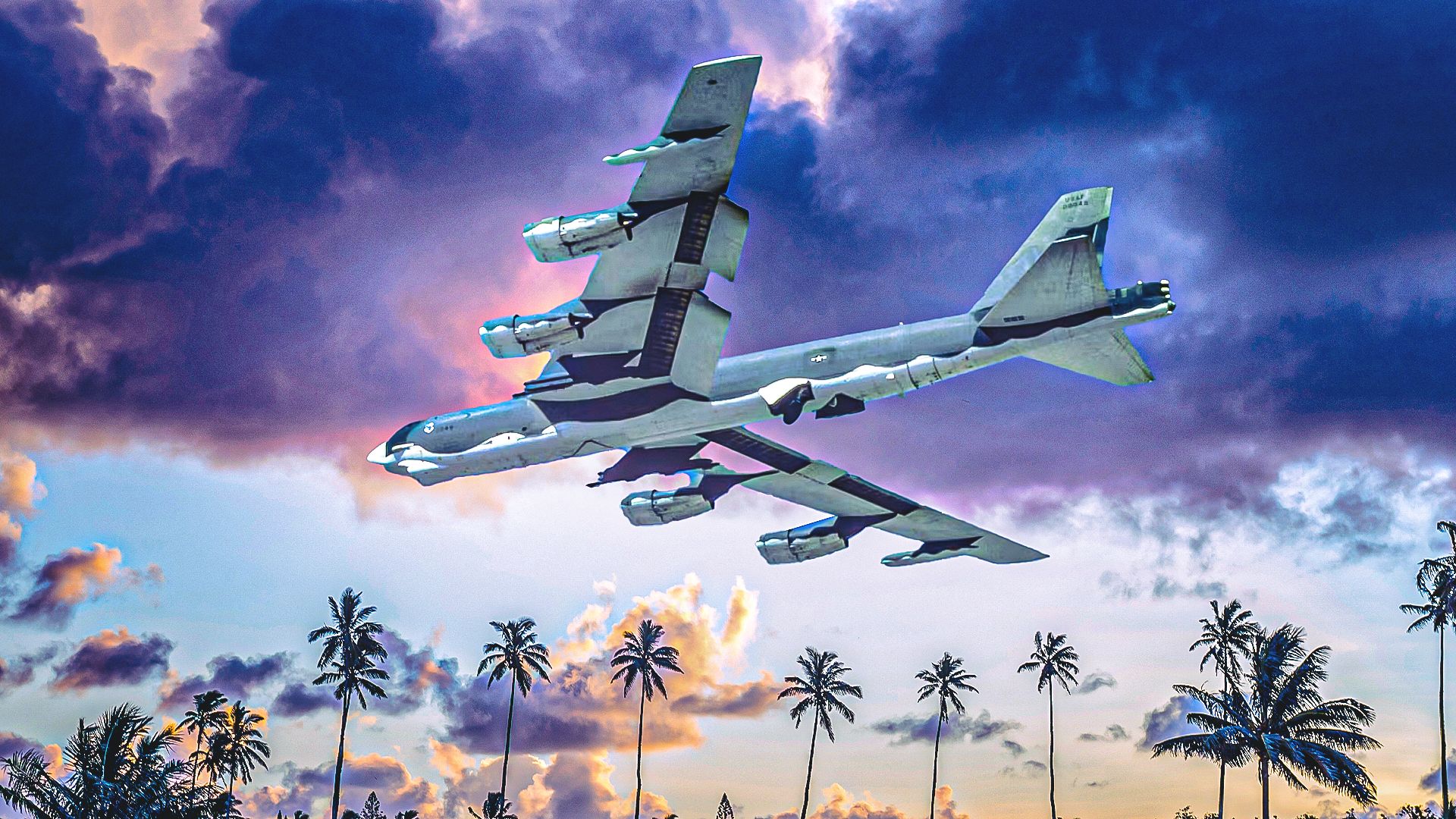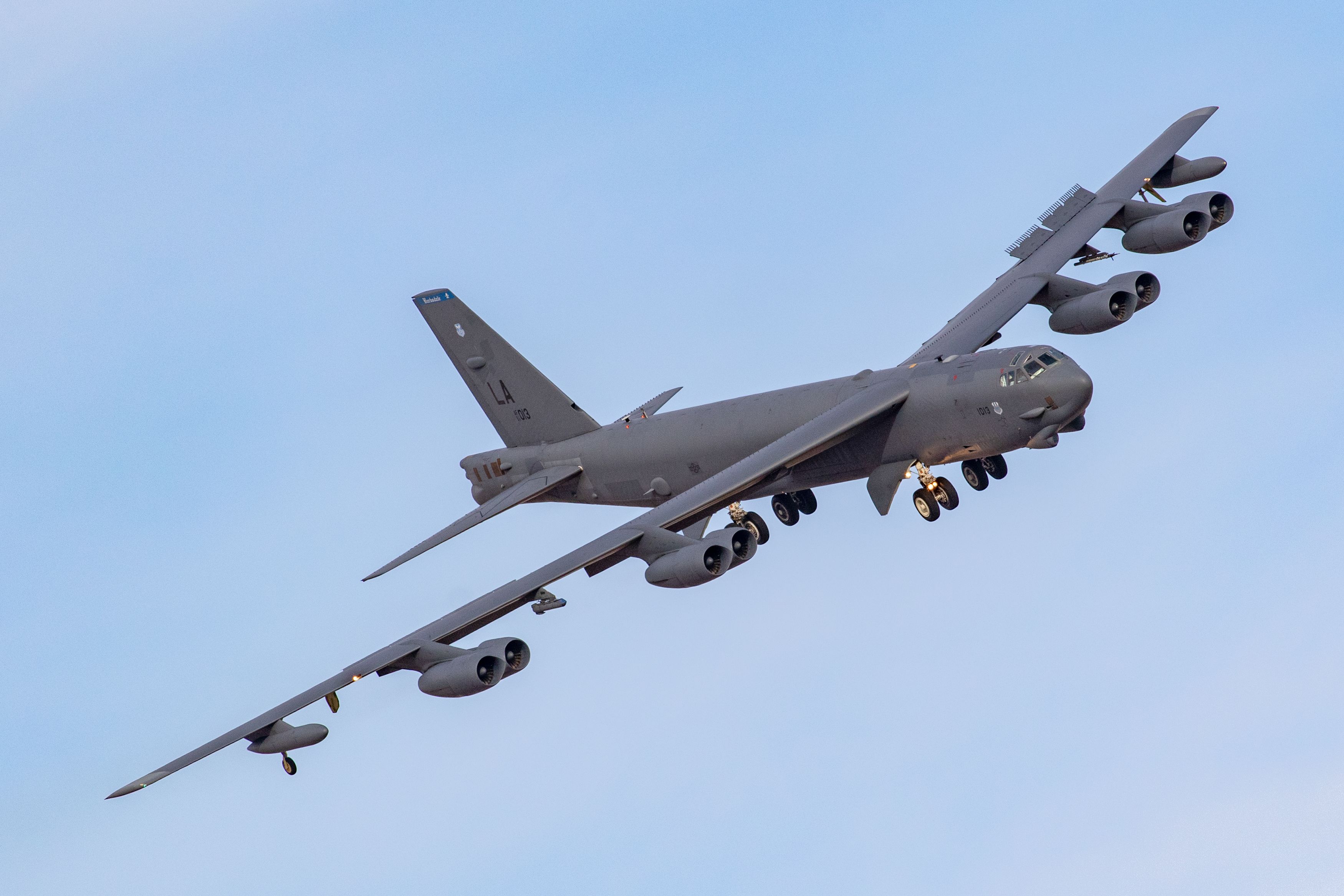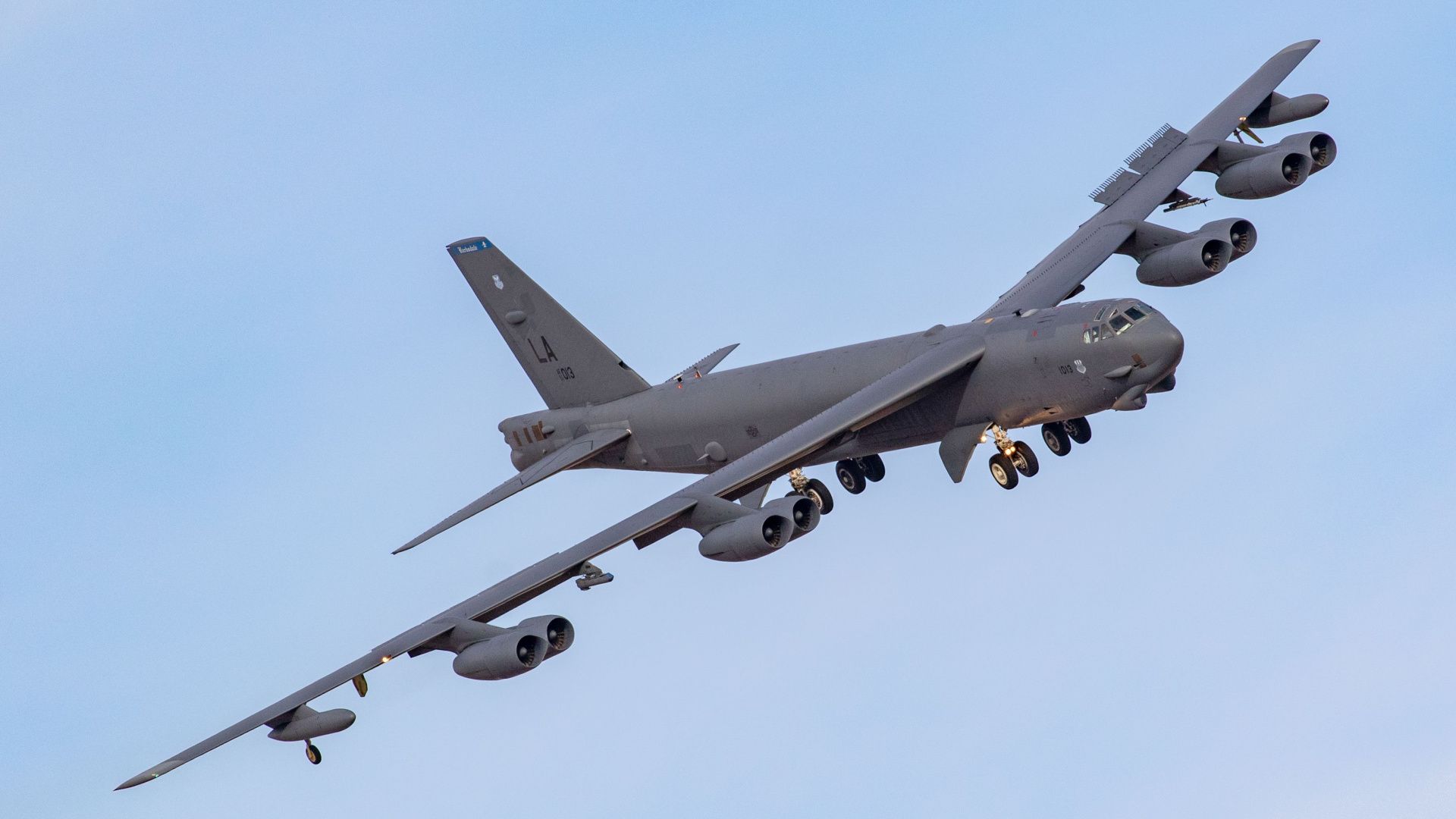Summary
- Flexibility and versatility are hallmarks of the B-52 bomber, excelling in strategic attack, maritime operations, and offensive counter-air.
- The B-52, initially designed for nuclear warfare, now showcases conventional strategic attack capabilities using precision munitions.
- From Vietnam to Iraq, the B-52 has proven itself in close-air support missions, highlighting its adaptability in diverse operational roles.
“Flexibility is the key to airpower,” quoth the maxim by early 20th century airpower theorist General Giulio Douhet. Going hand-in-hand with flexibility is versatility, and the B-52 Stratofortress AKA the “BUFF” (“Big Ugly Fat Fellow” or “Big Ugly Fat F*ck*r,” depending on whether you’re in polite company) has exemplified both of these crucial airpower tenets, which explains why this big bomber is still going strong in the US Air Force arsenal after seven decades.
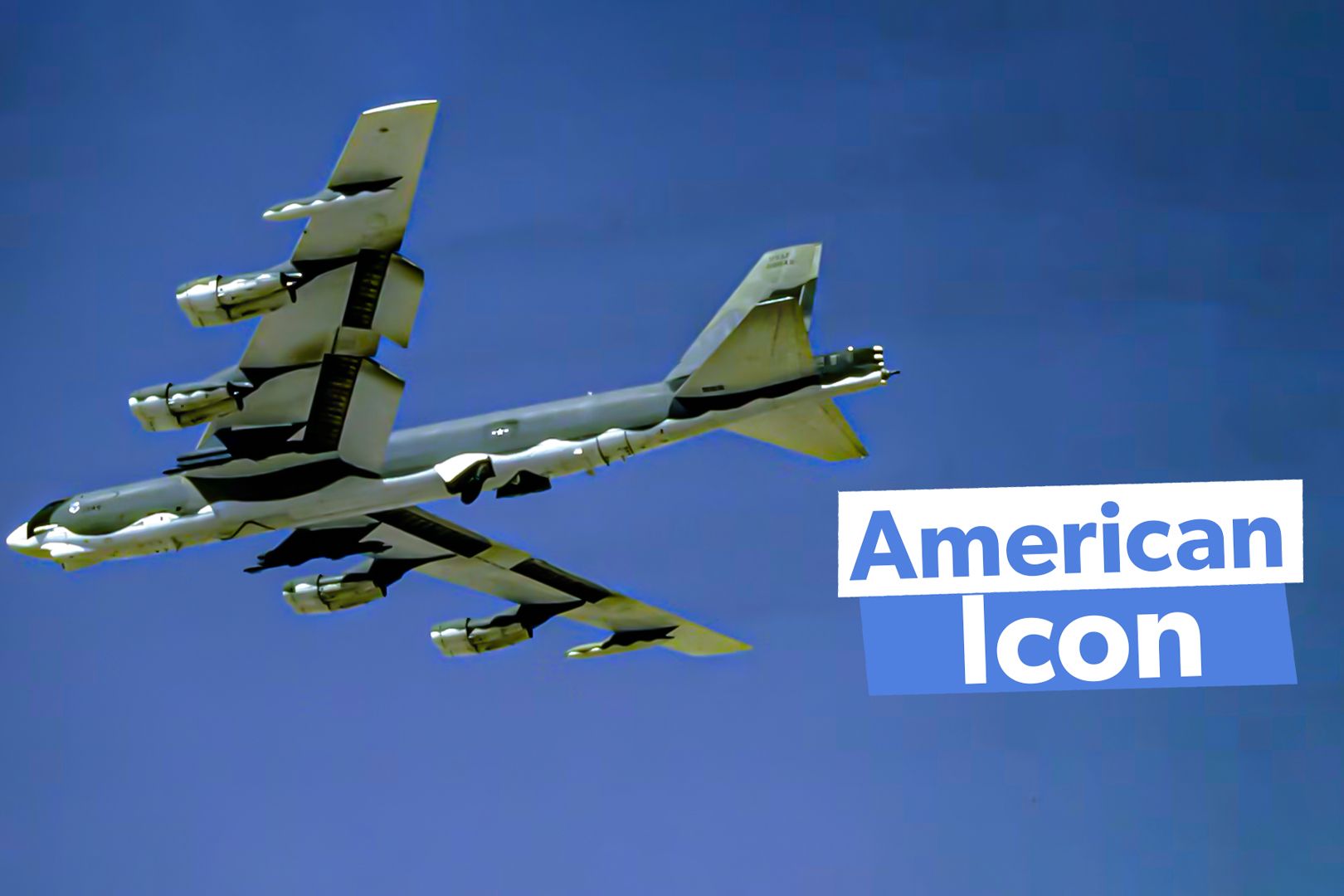
Related
Endurance: How The USAF B-52 Bomber Became An American Icon
The 70-year-old B-52 isn’t just the most successful strategic bomber; it’s also an American military and cultural icon.
According to the official USAF Fact Sheets on tis venerable and mighty warbird:
“In a conventional conflict, the B-52 can perform strategic attack, close-air support, air interdiction, offensive counter-air and maritime operations.”
Simple Flying now takes a closer look at the BUFF’s strategic capabilities.
5
Maritime operations
Mines and anti-ship missiles alike
I’ll start with this category, since it’s one of the bomber’s less publicized roles, not to mention I haven’t really discussed it at length in my previous articles on the B-52. According to the Air Force Nuclear Weapons Center:
“It is highly effective when used for ocean surveillance and can assist the U.S. Navy in anti-ship and mine-laying operations. In two hours, two B-52s can monitor 140,000 square miles (364,000 square kilometers) of ocean surface.”
The mines include the QuickStrike Extended Range mine, a 2,000-lb (907 kg), which mates the concept of a Mk64 underwater mine to that of the GBU-64v1 Joint Direct Attack Munition (JDAM) Extended Range variant.
This is quite a game changer for mine-laying operations, which traditionally has entailed employing mines as unguided gravity weapons, forcing the aircraft to fly at lower altitudes and releasing the mines at multiple intervals rather than single releases, in turn placing aircraft and aircrew alike at a high level of risk when carrying out these ops in a contested waterway.
As Lt. Col. Matt Spinelli, 49th Test and Evaluation Squadron (TES) commander, stated in an interview with 1st Lt Lindsey Heflin for NavalNews:
““What’s unique about QS-ER is its range and precision. We can now release in a Launch Acceptability Region at various speeds and altitudes and have the weapon land with incredible accuracy. This reduces the number of weapons needed to affect the mine field and makes the delivery platform more survivable.”
The BUFF can also wield the AGM-84 Harpoon anti-ship missile. The truism that “You learn something new every day” was reaffirmed when I conducted my research for this article.
I was surprised to learn from a September 2019 article in Air and Space Forces Magazine by retired USAF Lt. Gen. David A. Deptula that (1) it was actually way back in 1975 that the USAF agreed to train air crews in ocean surveillance, maritime strike, and aerial mine laying in cooperation with the US Navy and (2) the B-52s actually started carrying Harpoons back in 1983.
A major motivational factor in the former event was the fact that in the mid-1970s, the USN’s surface ship fleet was shrinking on account of the post-Vietnam War drawdown, whilst the Soviet Navy had its own surface fleet.
4
Strategic attack
Both conventional and unconventional (as in nuclear)
Let’s not forget that the B-52 was originally designed first and foremost as a “Doomsday” weapon, i.e. as a deep-penetration strategic bomber meant to drop nuclear gravity (free-fall) bombs upon the Soviet Union during the heady days of the original Strategic Air Command (SAC) when the unforgettable, hard-charging, cigar-chomping, no-nonsense Gen. Curtis Emerson LeMay (November 15, 1906 – October 1, 1990) ran the show.
That unforgettble closing scene from Stanley Kubrick’s classic 1964 black comedy film “Dr. Strangelove or: How I Learned to Stop Worrying and Love the Bomb” notwithstanding…That particular high-risk mission is no longer under the BUFF’s purview. However, that doesn’t mean that the warbird’s nuclear capability has completely gone away.
As noted in a January 2020 article for The Warzone by Joseph Trevithcik, the bomber is still certified to carry the nuclear-capable AGM-86B Air Launched Cruise Missile (ALCM), which will eventually be replaced by a more stealthy-launched nuke under the Long Range Stand-Off (LRSO) program.
Of course, the B-52 is still perfectly capable of carrying out conventional, i.e., non-nuclear strategic attack, using Mk 82 500-lb (230 kg) gravity bombs. Considering that the BUFF can accommodate a payload of 70,000 lb (32,000 kg), that equates to 140 such bombs!
Arguably the ultimate display of this conventional strategic attack capability was carried out during Operation Linebacker II, the so-called “Christmas bombing” of Hanoi in December 1972; the sheer devastation of these B-52 raids utterly devasted both the infrastructure and the morale of the North Vietnamese and drove them back to the peace table, damn near winning the Vietnam War for the US (although sadly this opportunity for victory was allowed to slip away).
Photo: Christopher Chambers | Shutterstock
Presumably, the carpet-bombing missions against then-Iraqi dictator Saddam Hussein’s elite Republican Guard could be lumped under this category as well, since degrading these troops was a key component of the Coalition Forces’ strategy. As the proverb goes, “An ounce of prevention is worth a pound of cure,” which is in line with the general concept of strategic deterrence. A simple show of force with the B-52 can go a long way.
This was demonstrated this past January when Stratofortresses assigned to the 5th Bomb wing at Miinot AFB, North Dakota, landed at Andersen AFB, Guam, at the end of the month in support of strategic deterrence missions aimed at reinforcing the rules-based international order within the United States Indo-Pacific Command (USINDOPACOM) area of responsibility.
3
Offensive Counter-Air (OCA)
Not just the purview of fighter planes
At first glance, one might mentally associate OCA primarily with “tactical” aircraft, i.e., supersonic fighter planes engaging the enemy’s fighters. However, back in February 1989, then-USAF Maj. Gregory J. Berlan, in a research paper for Air University Press at Maxwell AFB, Alabama, titled “FORWARD OFFENSE: Preparing the B-52 for Conventional Warfare,” envisioned how a big lumbering bomber like the BUFF could be outfitted for the OCA mission:
“B-52s assigned to counterair operations would be concerned primarily with OCA and SEAD [Suppression of Enemy Air Defenses]. By conducting successful OCA and SEAD operations, the B-52 enables other forces to accomplish their assigned missions. To optimize the B-52’s performance in OCA and SEAD requires extensive equipment modifications.
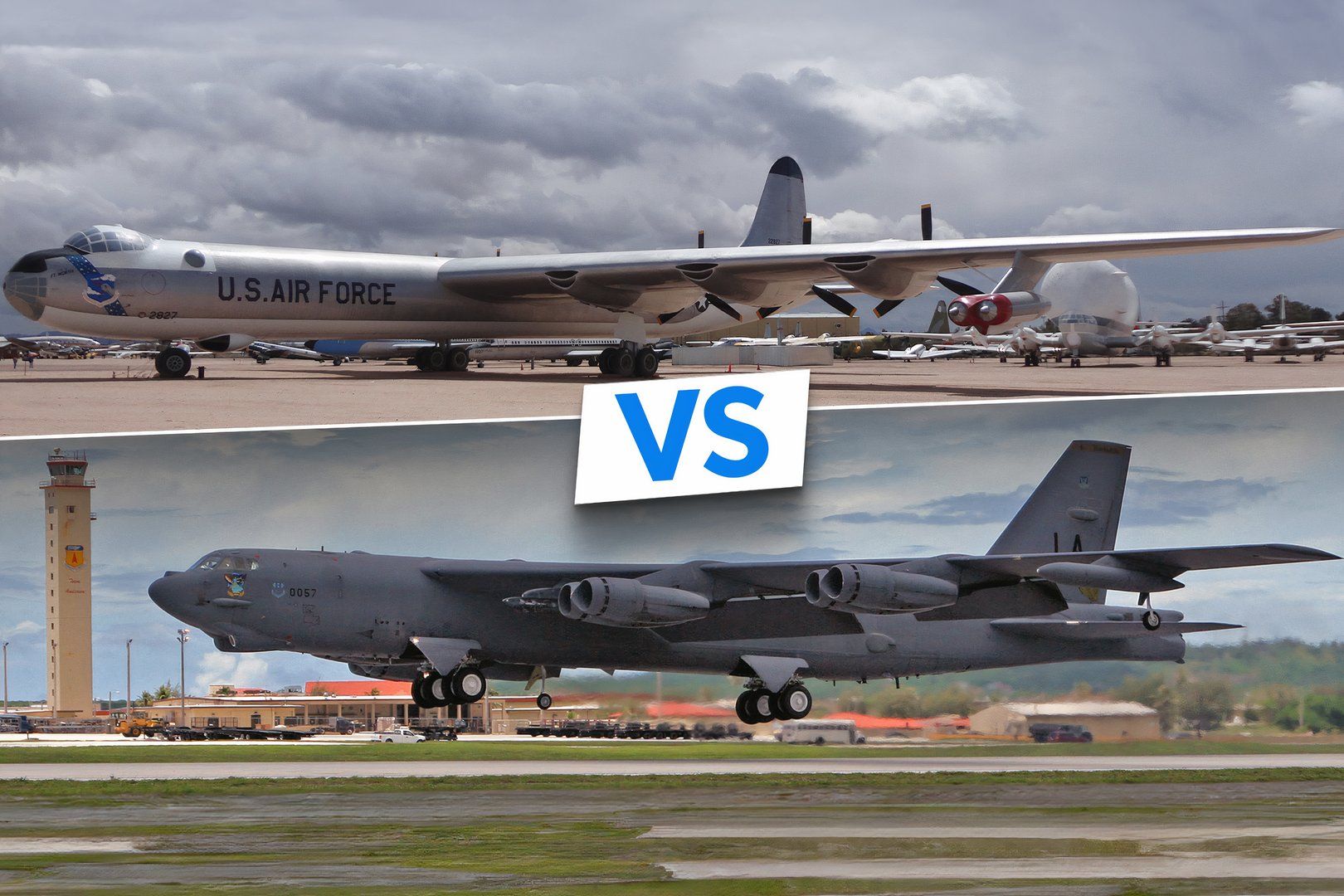
Related
B-52 vs B-36: Comparing The USAF’s Epic Bombers
These bombers helped the United States Air Force win the Cold War and beyond.
“‘AFM [Air Force Manual] 1-1 defines offensive counterair as ‘aerospace operations conducted to seek out and neutralize or destroy enemy aerospace forces at a time and place of our choosing.’ The most efficient method of accomplishing this against enemy aircraft is to attack the enemy aircraft when they are most vulnerable–when they are on the ground. Once airborne enemy aircraft are most difficult to find and to neutralize. If these enemy aircraft are interceptors, the B-52 becomes the hunted and not the hunter.”
Photo: Christopher Chambers | Shutterstock
To prevent this undesirable turn of events, the B-52 must be equipped with long-range standoff munitions that trap the enemy aircraft on the ground. In this way air superiority is temporarily achieved, and the enemy aircraft remain vulnerable to attack for a longer time period. Unfortunately, closing a runway for even a short period is a difficult task.”
Maj. Berland’s words proved to be quite prescient, especially that final paragraph, thanks to the BUFF’s ability to accommodate weapons systems such as the JDAM, the aforementioned ALCM (with a conventional warhead, that is), and the AGM-154 Joint Standoff Attack Weapon (JSOW).
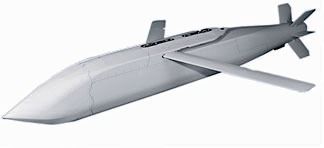
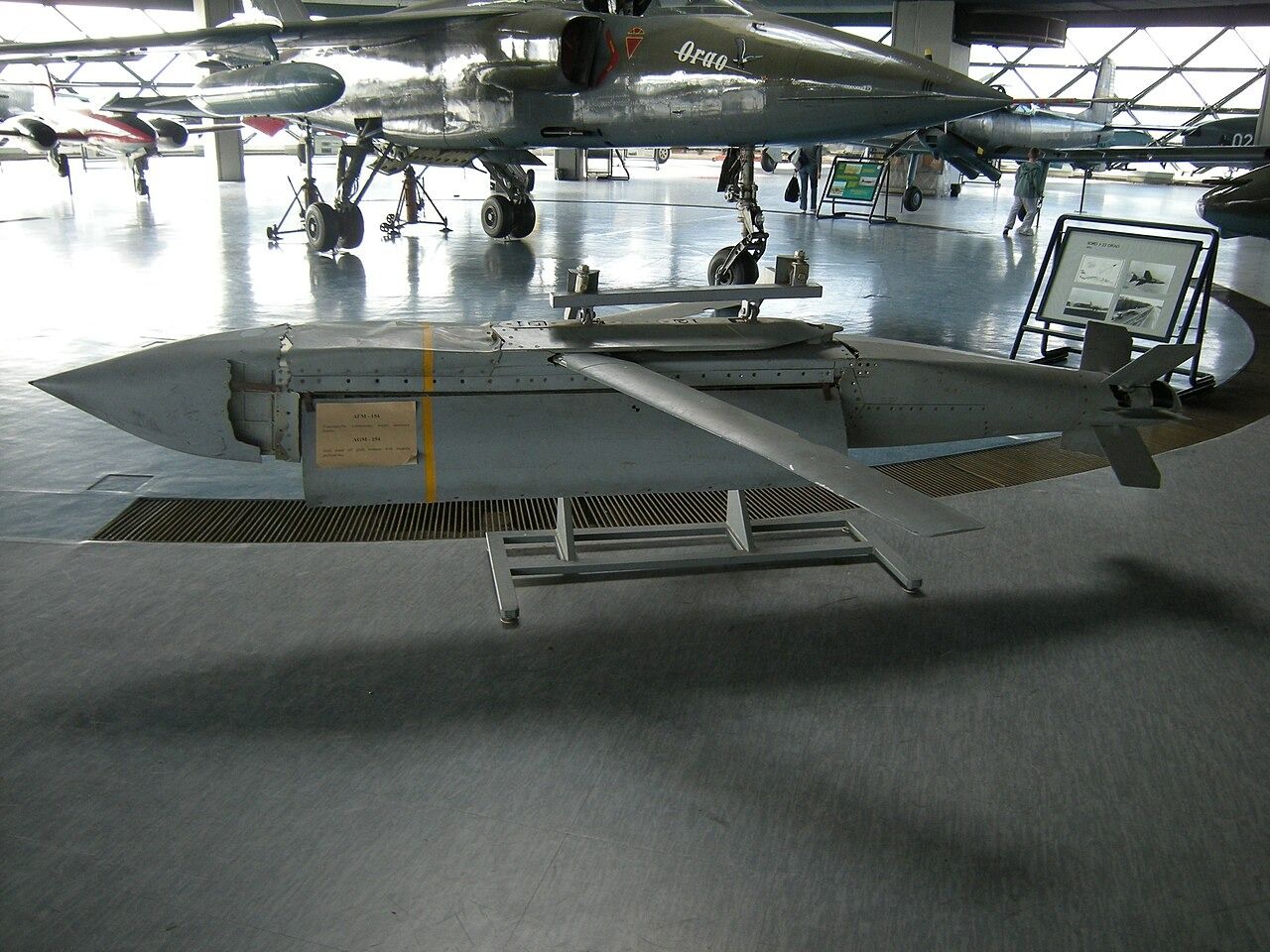
2
Interdiction
Particularly effective during the Vietnam War
Air Force Doctrine Publication (AFDP) 3-03 – Counterland Operations, published by the Curtis E. LeMay (hey, there’s that name again) LeMay Center for Doctrine Development and Education defines air interdiction as follows:
“[A]ir operations conducted to divert, disrupt, delay, or destroy the enemy’s military potential before it can be brought to bear effectively against friendly forces, or to otherwise achieve joint force commander’s (JFC’s) objectives, and conducted at such distance from friendly forces that detailed integration of each air mission with the fire and movement of friendly forces is not required.”
The Stratofortress dramatically demonstrated its efficacy as an air interdiction tool during the Operation Arc Light missions (1965–1973) of the Vietnam War. During that time, the mammoth bombers deployed from Andersen AFB to strikes at North Vietnamese Army (NVA) and Viet Cong (VC) bases, supply routes, and behind-the-lines troop concentrations.
“I flew the Arc Lights over Vietnam/I did it all for my Uncle Sam/I heard ’em weep and wail/Up and down the Ho Chi Trail/F*** the bastards, I don’t give a damn! “–” Buff ” by James P. “Bull Durham (Lt. Col., USAF, Ret.)
1
Close-air support (CAS)
From Vietnam to Iraq
If one wanted to nitpick technically, this falls more under a “tactical” than “strategic” category of airpower employment. However, since it’s still one of the categories listed in the USAF fact sheets cited at the beginning of this article, I’ll let that slide (whether our dear readers will let it slide is TBD, I reckon).
Although I already listed the Arc Light missions under the Interdiction category, they often overlapped with the CAS category. This was especially true during Operation Scotland, the relief of the besieged US Marine Corps outpost at Khe Sanh in 1968. To quote a passage from “Unheralded Victory: The Defeat of the Viet Cong and the North Vietnamese Army, 1961-1973:
“Directed onto target by radar while flying at 30,000 feet, the first sign of their presence was the sound of the huge bombs crashing to earth…’Damn it,’ said the colonel. ‘For every round they drop on us, we drop a whole planeload of bombs on them.’”
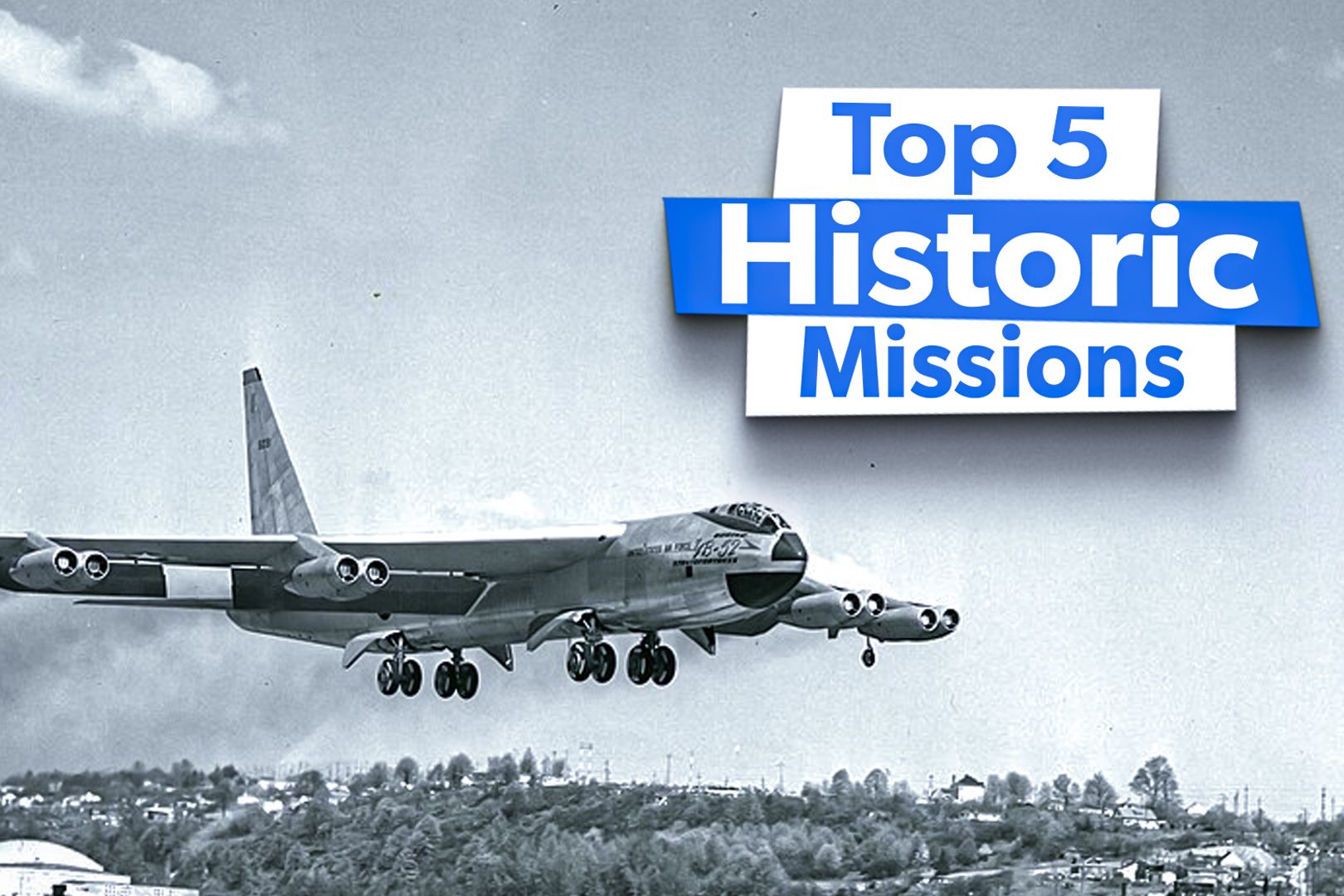
Related
Top 5 Historic Missions Of The B-52 Stratofortress
The B-52 is America’s most accomplished bomber of the post-WWII era. Let’s take a look at some of this illustrious aircraft’s most defining missions.
To cite a more recent example of the B-52’s capabilities, we turn once more to the USAF Nuclear Weapons Center:
“In 2001, the B-52 contributed to the success of Operation Enduring Freedom, providing the ability to loiter high above the battlefield and provide close air support through the use of precision guided munitions. ”
